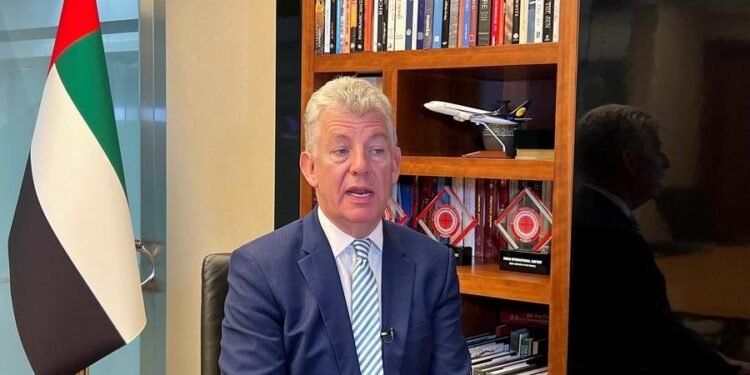Travelling short distances should not be by plane but via alternative, less carbon-intensive, and more convenient modes of transportation, according to Paul Griffiths, CEO of Dubai Airports.
Speaking at the McKinsey Global Infrastructure Initiative (GII) Summit in Dubai, Griffiths, who has now spent years focusing on growing the numbers of passengers at the Dubai International Airport (DXB), said that passengers should not have to waste their waking hours in travel; instead, they should travel by night, when traffic is less and sleep is not affected, in autonomous vehicles akin to moving hotel rooms.
Griffiths told the summit that the idea came to him after a delayed flight during a family trip forced him to travel to his destination by car, and as the return trip meant driving home at the busiest time of day, he decided instead to sleep until 2am and set off when there was no traffic. The experience gave him a “eureka moment” with the idea of an autonomous, sustainably powered, mechanised transport system which allows passengers to sleep, work or watch movies while they travel.
He told Zawya: “I am not talking my way out of a job, but I rather think there might be a way of reserving air transport for longer routes where speed is required, and where there are shorter distances there are other modes we should be required to exploit, such as fast rail and driverless cars.”
Speaking to delegates, he said: “The world’s transport system may be at an inflection point, where the way we move, in an attempt to move ever faster, is no longer affordable or sustainable, as evidenced by the end of Concord flights and the costs of the UK’s HS2 rail project, which has ballooned from £55 billion ($70 billion) in 2015 to £106 billion in 2020.”
Mobility is challenged by the need to carry to fuel. For every 10 tonnes of fuel carried aloft, two tons is burned to carry the remaining eight, he said.
Griffiths has been a champion of a ‘no red light’ approach in DXB, using technology such as self checkin and passport control to speed up the passenger traffic through the airport, eliminating the need to stand in queues, so that passengers stop moving only when they choose to, but he indicated an awareness that the airport experience is far from a globally pleasant one.
Dubai’s airports
Dubai has been home to two airports since the opening of Dubai World Central (DWC) in 2010. There is a longstanding plan that the operations will move from DXB to DWC, where there are more runways and more room to develop, something Griffiths says will be “a gradual process”.
“What we’re trying to do is wrest all the last vestiges of capacity out of DXB, but there will come to a time we will need to move to the new airport,” he said.
Much of the cargo capacity has already moved there, with a new FedEx facility opening just last week, but eventually the passenger terminal there, which is already capable of taking 20 million passengers per year will come into its own.
“Eventually we will have to start moving airlines over to DWC, but the focus of the real challenge of DWC will come later.”
No conversation about a GCC airport would be complete without discussing the growing competition in the region, with Saudi Arabia’s capital Riyadh, being the most recent hub to announce ambitious expansion plans.
Griffiths is not worried by the competition. “Airports are very particular to their location. They serve the communities in which they are geographically based. I don’t think airports themselves are competitive to each other, but the transit traffic is incredibly competitive,” he said.
After Dubai’s ‘incredible’ post-COVID-19 recovery, Dubai’s traffic has skewed in favour of point-to-point.
Dubai International Airport expects 88.8 million passengers in 2024. Griffiths said it is already being revised upwards thanks to a strong January performance.
(Reporting by Imogen Lillywhite; editing by Seban Scaria)
imogen.lillywhite@lseg.com










